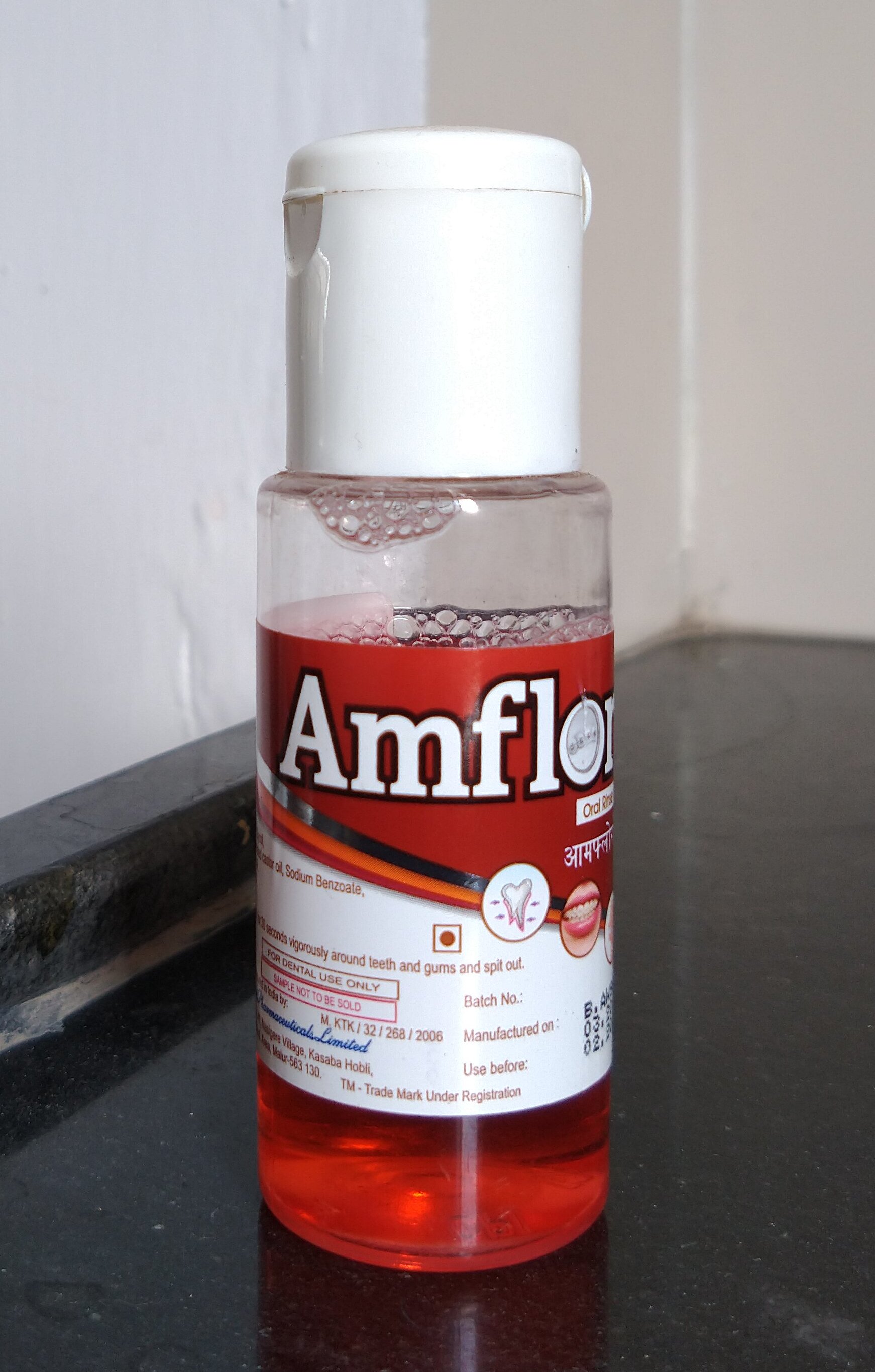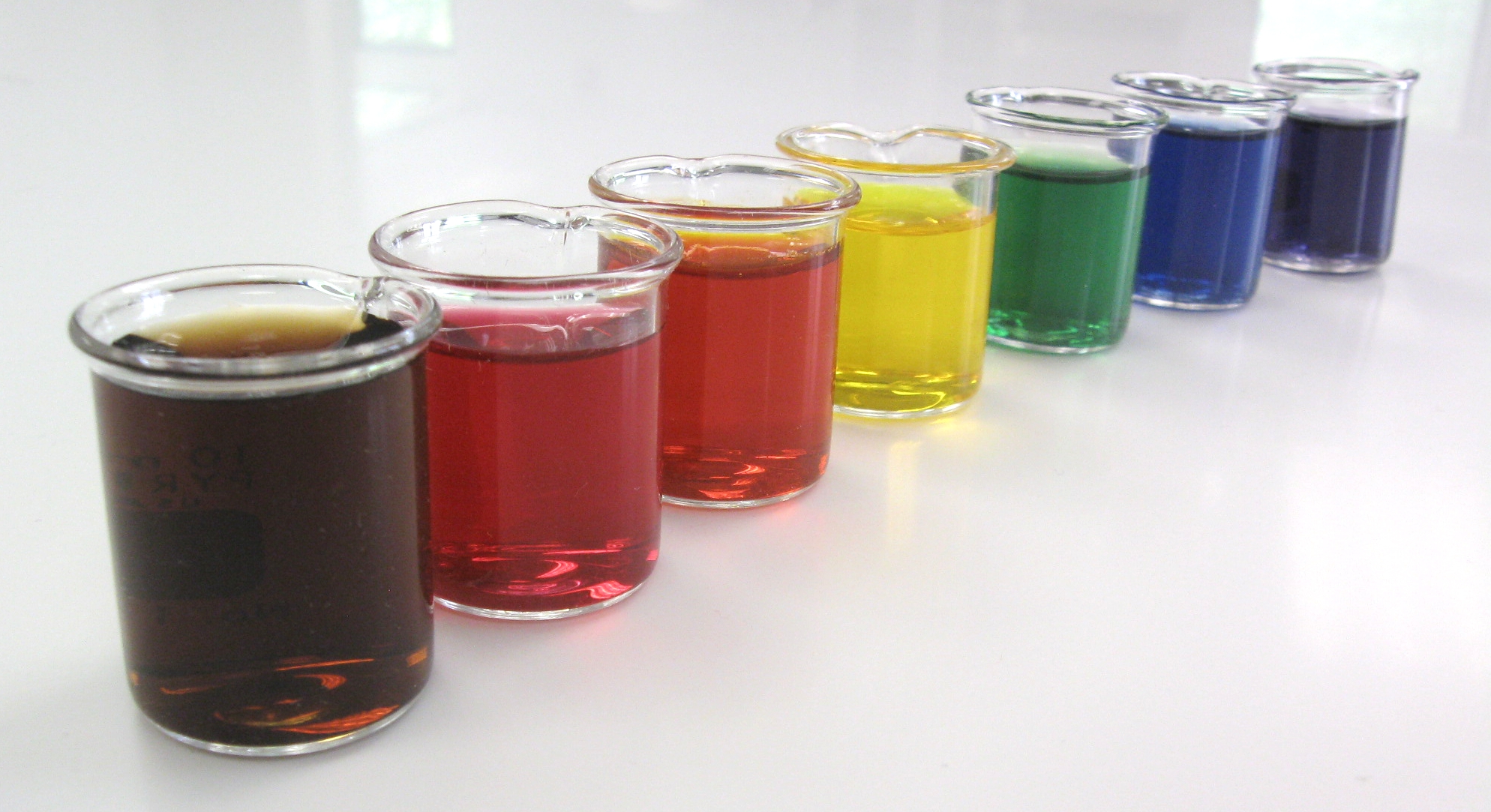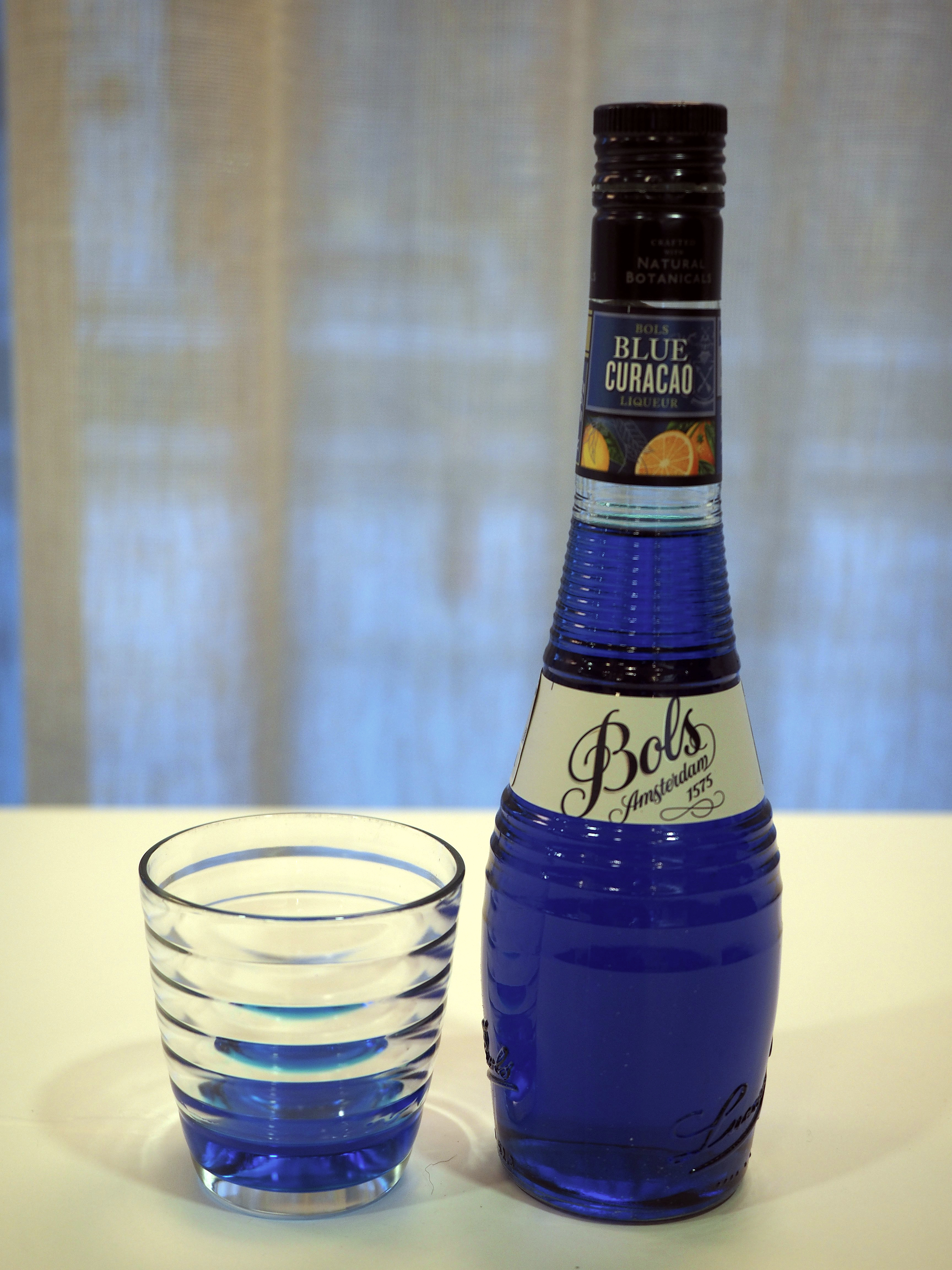|
E124
Ponceau 4R (known by more than 100 synonyms,Abbey J, et at. Colorants. pp 459-465 in Encyclopedia of Food Safety, Vol 2: Hazards and Diseases. Eds, Motarjemi Y et al. Academic Press, 2013. including as C.I. 16255,FDA. 9 November 2008Food and Drug Administration Compliance Program Guidance Manual, Chapter 03 – Foodborne Biological Hazardsp37 cochineal red A, C.I. acid red 18, brilliant scarlet 3R, brilliant scarlet 4R, new coccine,) is a synthetic colourant that may be used as a food colouring. It is denoted by E Number E124. Its chemical name is 1-(4-sulfo-1-napthylazo)-2-napthol-6,8-disulfonic acid, trisodium salt. ''Ponceau'' (17th century French for "poppy-coloured") is the generic name for a family of azo dyes. Ponceau 4R is a strawberry red azo dye which can be used in a variety of food products, and is usually synthesized from aromatic hydrocarbons; it is stable to light, heat, and acid but fades in the presence of ascorbic acid. It is used in Europe, Asia, and Aust ... [...More Info...] [...Related Items...] OR: [Wikipedia] [Google] [Baidu] |
Food Coloring
Food coloring, or color additive, is any dye, pigment, or substance that imparts color when it is added to food or drink. They come in many forms consisting of liquids, powders, gels, and pastes. Food coloring is used in both commercial food production and domestic cooking. Food colorants are also used in a variety of non-food applications, including cosmetics, pharmaceuticals, home craft projects, and medical devices. Purpose of food coloring People associate certain colors with certain flavors, and the color of food can influence the perceived flavor in anything from candy to wine. Sometimes, the aim is to simulate a color that is perceived by the consumer as natural, such as adding red coloring to glacé cherries (which would otherwise be beige), but sometimes it is for effect, like the green ketchup that Heinz launched in 2000. Color additives are used in foods for many reasons including: * To make food more attractive, appealing, appetizing, and informative * Offset c ... [...More Info...] [...Related Items...] OR: [Wikipedia] [Google] [Baidu] |
E Number
E numbers ("E" stands for "Europe") are codes for substances used as food additives, including those found naturally in many foods such as vitamin C, for use within the European Union (EU) and European Free Trade Association (EFTA). Commonly found on food labels, their safety assessment and approval are the responsibility of the European Food Safety Authority (EFSA). The fact that an additive has an E number implies that its use was at one time permitted in products for sale in the European Single Market; some of these additives are no longer allowed today. Having a single unified list for food additives was first agreed upon in 1962 with food colouring. In 1964, the directives for preservatives were added, in 1970 antioxidants were added, in 1974 emulsifiers, stabilisers, thickeners and gelling agents were added as well. Numbering schemes The numbering scheme follows that of the International Numbering System (INS) as determined by the '' Codex Alimentarius'' committee, t ... [...More Info...] [...Related Items...] OR: [Wikipedia] [Google] [Baidu] |
Food Colorings
Food coloring, or color additive, is any dye, pigment, or substance that imparts color when it is added to food or drink. They come in many forms consisting of liquids, powders, gels, and pastes. Food coloring is used in both commercial food production and domestic cooking. Food colorants are also used in a variety of non-food applications, including cosmetics, pharmaceuticals, home craft projects, and medical devices. Purpose of food coloring People associate certain colors with certain flavors, and the color of food can influence the perceived flavor in anything from candy to wine. Sometimes, the aim is to simulate a color that is perceived by the consumer as natural, such as adding red coloring to glacé cherries (which would otherwise be beige), but sometimes it is for effect, like the green ketchup that Heinz launched in 2000. Color additives are used in foods for many reasons including: * To make food more attractive, appealing, appetizing, and informative * Offset col ... [...More Info...] [...Related Items...] OR: [Wikipedia] [Google] [Baidu] |
Chemical Synthesis
As a topic of chemistry, chemical synthesis (or combination) is the artificial execution of chemical reactions to obtain one or several products. This occurs by physical and chemical manipulations usually involving one or more reactions. In modern laboratory uses, the process is reproducible and reliable. A chemical synthesis involves one or more compounds (known as '' reagents'' or ''reactants'') that will experience a transformation when subjected to certain conditions. Various reaction types can be applied to formulate a desired product. This requires mixing the compounds in a reaction vessel, such as a chemical reactor or a simple round-bottom flask. Many reactions require some form of processing (" work-up") or purification procedure to isolate the final product. The amount produced by chemical synthesis is known as the ''reaction yield''. Typically, yields are expressed as a mass in grams (in a laboratory setting) or as a percentage of the total theoretical quantity that ... [...More Info...] [...Related Items...] OR: [Wikipedia] [Google] [Baidu] |
Naphthalenesulfonates
Naphthalenesulfonates are derivatives of sulfonic acid which contain a naphthalene functional unit. A related family of compounds are the aminonaphthalenesulfonic acids. Of commercial importance are the alkylnaphthalene sulfonates, which are used as superplasticizers in concrete. They are produced on a large scale by condensation of naphthalenesulfonate or alkylnaphthalenesulfonates with formaldehyde. Examples include: * amaranth dye * amido black * armstrong's acid * congo red * Evans blue * suramin * trypan blue Trypan blue is an azo dye. It is a direct dye for cotton textiles. In biosciences, it is used as a vital stain to selectively colour dead tissues or cells blue. Live cells or tissues with intact cell membranes are not coloured. Since cells ... References External links * Naphthalenesulfonates {{organic-compound-stub ... [...More Info...] [...Related Items...] OR: [Wikipedia] [Google] [Baidu] |
Organic Sodium Salts
Organic may refer to: * Organic, of or relating to an organism, a living entity * Organic, of or relating to an anatomical organ Chemistry * Organic matter, matter that has come from a once-living organism, is capable of decay or is the product of decay, or is composed of organic compounds * Organic compound, a compound that contains carbon ** Organic chemistry, chemistry involving organic compounds Farming, certification and products * Organic farming, agriculture conducted according to certain standards, especially the use of stated methods of fertilization and pest control * Organic certification, accreditation process for producers of organically-farmed products * Organic horticulture, the science and art of growing fruits, vegetables, flowers, or ornamental plants by following the essential principles of organic agriculture * Organic products, "organics": ** Organic food, food produced from organic farming methods and often certified organic according to organic farming stan ... [...More Info...] [...Related Items...] OR: [Wikipedia] [Google] [Baidu] |
Azo Dyes
Azo dyes are organic compounds bearing the functional group R−N=N−R′, in which R and R′ are usually aryl and substituted aryl groups. They are a commercially important family of azo compounds, i.e. compounds containing the C-N=N-C linkage. Azo dyes are synthetic dyes and do not occur naturally. Most azo dyes contain only one azo group, but some dyes called "disazo dyes" contain two azo groups, some dyes called "trisazo dyes" contain three azo groups and are or more. Azo dyes comprise 60-70% of all dyes used in food and textile industries. Azo dyes are widely used to treat textiles, leather articles, and some foods. Chemically related derivatives of azo dyes include azo pigments, which are insoluble in water and other solvents. Classes Many kinds of azo dyes are known, and several classification systems exist. Some classes include disperse dyes, metal-complex dyes, reactive dyes, and substantive dyes. Also called direct dyes, substantive dyes are employed for ... [...More Info...] [...Related Items...] OR: [Wikipedia] [Google] [Baidu] |
Food Intolerance
Food intolerance is a detrimental reaction, often delayed, to a food, beverage, food additive, or compound found in foods that produces symptoms in one or more body organs and systems, but generally refers to reactions other than food allergy. Food hypersensitivity is used to refer broadly to both food intolerances and food allergies. Food allergies are immune reactions, typically an IgE reaction caused by the release of histamine but also encompassing non-IgE immune responses. This mechanism causes allergies to typically give immediate reaction (a few minutes to a few hours) to foods. Food intolerances can be classified according to their mechanism. Intolerance can result from the absence of specific chemicals or enzymes needed to digest a food substance, as in hereditary fructose intolerance. It may be a result of an abnormality in the body's ability to absorb nutrients, as occurs in fructose malabsorption. Food intolerance reactions can occur to naturally occurring chemicals ... [...More Info...] [...Related Items...] OR: [Wikipedia] [Google] [Baidu] |
Precautionary Principle
The precautionary principle (or precautionary approach) is a broad epistemological, philosophical and legal approach to innovations with potential for causing harm when extensive scientific knowledge on the matter is lacking. It emphasizes caution, pausing and review before leaping into new innovations that may prove disastrous. Critics argue that it is vague, self-cancelling, unscientific and an obstacle to progress. In an engineering context, the precautionary principle manifests itself as the factor of safety, discussed in detail in the monograph of Elishakoff. It was apparently suggested, in civil engineering, by Belindorde Bélidor, Bernard Forest, La science des ingénieurs, dans la conduite des travaux de fortification et d'architecture civile, Paris: Chez Claude Jombert 1729 in 1729. Interrelation between safety factor and reliability is extensively studied by engineers and philosophers. The principle is often used by policy makers in situations where there is the possi ... [...More Info...] [...Related Items...] OR: [Wikipedia] [Google] [Baidu] |
Sodium Benzoate
Sodium benzoate is the sodium salt of benzoic acid, widely used as a food preservative (with an E number of E211) and a pickling agent. It appears as a white crystalline chemical with the formula C6H5COONa. Production Sodium benzoate is commonly produced by the neutralization of sodium hydroxide (NaOH) with benzoic acid (C6H5COOH), which is itself produced commercially by partial oxidation of toluene with oxygen. Natural occurrence Many foods are natural sources of benzoic acid, its salts, and its esters. Fruits and vegetables can be rich sources, particularly berries such as cranberry and bilberry. Other sources include seafood, such as prawns, and dairy products. Uses As a preservative Sodium benzoate can act as a food preservative. It is most widely used in acidic foods such as salad dressings (for example acetic acid in vinegar), carbonated drinks ( carbonic acid), jams and fruit juices (citric acid), pickles (acetic acid), condiments, and frozen yogurt toppings. It is ... [...More Info...] [...Related Items...] OR: [Wikipedia] [Google] [Baidu] |
Carmoisine
Azorubine is an azo dye consisting of two naphthalene subunits. It is a red solid. It is mainly used in foods that are heat-treated after fermentation. It has E number E122. Uses In the US, this color was listed in 1939 as FD&C Red No. 10 for use in externally applied drugs and cosmetics. It was delisted in 1963 because no party was interested in supporting the studies needed to establish safety. It was not used in food in the US.FDABackground Document for the Food Advisory Committee: Certified Color Additives in Food and Possible Association with Attention Deficit Hyperactivity Disorder in Children: March 30-31, 2011/ref>FDA. 9 November 2008Food and Drug Administration, Compliance Program Guidance Manual, Chapter 03 - Foodborne Biological Hazardsp37 In the EU, azorubine is known as E number E122, and is authorized for use in certain foods and beverages, such as cheeses, dried fruit, and some alcoholic beverages, and is permitted for use as an excipient in medications. There a ... [...More Info...] [...Related Items...] OR: [Wikipedia] [Google] [Baidu] |
Sunset Yellow
Sunset yellow FCF (also known as orange yellow S, or C.I. 15985) is a petroleum-derived orange azo dye with a pH dependent maximum absorption at about 480 nm at pH 1 and 443 nm at pH 13 with a shoulder at 500 nm. When added to foods sold in the United States it is known as FD&C Yellow 6; when sold in Europe, it is denoted by E Number E110. Uses Sunset yellow is used in foods, condoms, cosmetics, and drugs. Sunset yellow FCF is used as an orange or yellow-orange dye. For example, it is used in candy, desserts, snacks, sauces, and preserved fruits. Sunset yellow is often used in conjunction with E123, amaranth, to produce a brown colouring in both chocolates and caramel. Safety The acceptable daily intake (ADI) is 0–4 mg/kg under both EU and WHO/FAO guidelines. Sunset yellow FCF has no carcinogenicity, genotoxicity, or developmental toxicity in the amounts at which it is used. It has been claimed since the late 1970s, under the advocacy of Benjamin Fein ... [...More Info...] [...Related Items...] OR: [Wikipedia] [Google] [Baidu] |






